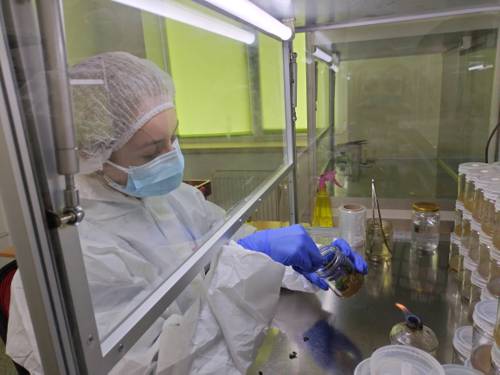
FAQ About Indoor Plant Micropropagation Methods

What is micropropagation in indoor plants?
Micropropagation is a technique used in plant biology to propagate plants from very small pieces of plant tissue, often in a laboratory setting. This method is particularly useful for indoor plants as it allows for the rapid production of large numbers of plants from a single specimen, ensuring uniformity in size and quality.

How does micropropagation benefit indoor plant production?
Micropropagation offers several benefits for indoor plant production, including rapid propagation of plants, production of disease-free specimens, and the ability to produce uniform plant batches. This method is especially advantageous for commercial growers who need large quantities of consistent, high-quality indoor plants.

What are the common steps involved in indoor plant micropropagation?
The micropropagation process generally involves several key steps: initiation, multiplication, rooting, and acclimatization. It begins with taking a tissue sample (explants) from the parent plant, sterilizing it, and then placing it in a suitable growth medium for tissue culture. The plantlets are then multiplied, rooted, and later acclimatized to normal growing conditions.

Which indoor plants are suitable for micropropagation?
Many popular indoor plants are suitable for micropropagation, including orchids, ferns, succulents, and other ornamental plants. Plants that are difficult to propagate by traditional methods often benefit the most from micropropagation techniques.

Is micropropagation used only for indoor plants?
While micropropagation is highly beneficial for indoor plants, it is not limited to them. This technique is widely used for a variety of plants, including food crops, medicinal plants, and forest species. However, its application in indoor plants is particular due to the need for controlled environments and uniformity in decorative plants.

What kind of environment is required for micropropagation?
Micropropagation requires a sterile, controlled environment, usually in a laboratory or a specialized growth chamber. The use of aseptic techniques is crucial to prevent contamination. The environment must maintain consistent temperature, humidity, and lighting to support optimal growth and development of culture tissues.

Can micropropagation help in conserving plant biodiversity?
Yes, micropropagation can play a significant role in plant conservation. It allows for the ex-situ conservation of endangered or rare plant species by rapidly producing large numbers of individuals from a small genetic sample, potentially saving species from extinction.

What are the challenges associated with micropropagation?
Despite its advantages, micropropagation has challenges, such as the need for specialized skills and equipment, risk of contamination, and the requirement for maintaining stringent environmental conditions. Additionally, some plant species might not respond well to tissue culture, necessitating further research and adaptation of methods.

How do you ensure the genetic stability of plants produced through micropropagation?
Genetic stability in micropropagation can be ensured by carefully selecting the parent plant tissue and maintaining reputable culture practices. Also, regular monitoring and evaluation are necessary to detect any genetic variations or mutations, allowing for adjustments before large scale plant release.

What role does growth medium play in micropropagation?
The growth medium is a crucial component in micropropagation; it provides essential nutrients, vitamins, and hormones to support the growth of plant tissues. The composition of the medium can be adjusted depending on the plant species and the stage of tissue culture, significantly influencing the success of micropropagation.

Are there cost implications for using micropropagation in commercial indoor plant production?
Yes, although micropropagation can be cost-effective in the long run due to the high volume and quality of plants produced, initial set-up costs can be high. Investments in laboratory equipment, trained personnel, and infrastructure are necessary, but for large commercial operations, these costs are often justified by the benefits.

Can micropropagation be done at home?
Micropropagation is typically a laboratory-based technique due to the need for sterile conditions and specialized equipment. However, hobbyists with access to the right equipment and who are knowledgeable about the process may be able to experiment with micropropagation on a small scale at home.

What are the latest advancements in micropropagation for indoor plants?
Recent advancements in micropropagation include the development of automated systems for tissue culture, improved growth media formulations, and the use of molecular techniques to enhance plant growth and development. These advancements are helping to make micropropagation more efficient and accessible.

How long does the micropropagation process take for indoor plants?
The duration of the micropropagation process can vary depending on the plant species and the specific methods used but typically ranges from a few weeks to several months. Certain stages, such as acclimatization, may require additional time to ensure the survival and adaptation of the plantlets to their new environment.

Is micropropagation environmentally friendly?
Micropropagation can be environmentally friendly as it utilizes minimal plant material and can reduce the need for chemical treatments and fertilizers by producing disease-free plants. Additionally, it can contribute to conservation efforts, reducing the exploitation of natural plant populations.

How do scientists select the plant tissue for micropropagation?
Scientists select plant tissue, or explants, based on several factors, including the health of the parent plant, ease of sterilization, and the type of tissue that is most likely to regenerate. Commonly used tissues include meristematic regions, such as shoot tips and young leaves, which have high regenerative potential.

What is the difference between micropropagation and traditional propagation methods?
Micropropagation differs from traditional propagation methods by its use of tissue culture techniques in a controlled environment to produce large numbers of plants. Traditional methods like cuttings or seeds are generally less controlled, may require longer times, and result in less uniform plants.

Can micropropagation be used for genetically modified plants?
Yes, micropropagation can be used to propagate genetically modified plants. In fact, it is often employed in the development and propagation phases of GM plants to ensure that desirable genetic traits are consistently expressed in subsequent plant generations.

How is contamination controlled in micropropagation?
Controlling contamination is crucial in micropropagation given the sterile environments required. This involves using aseptic techniques, sterilizing all materials and tools, and maintaining a controlled atmosphere. Any contaminant detected must be promptly addressed to prevent the loss of culturing plants.
